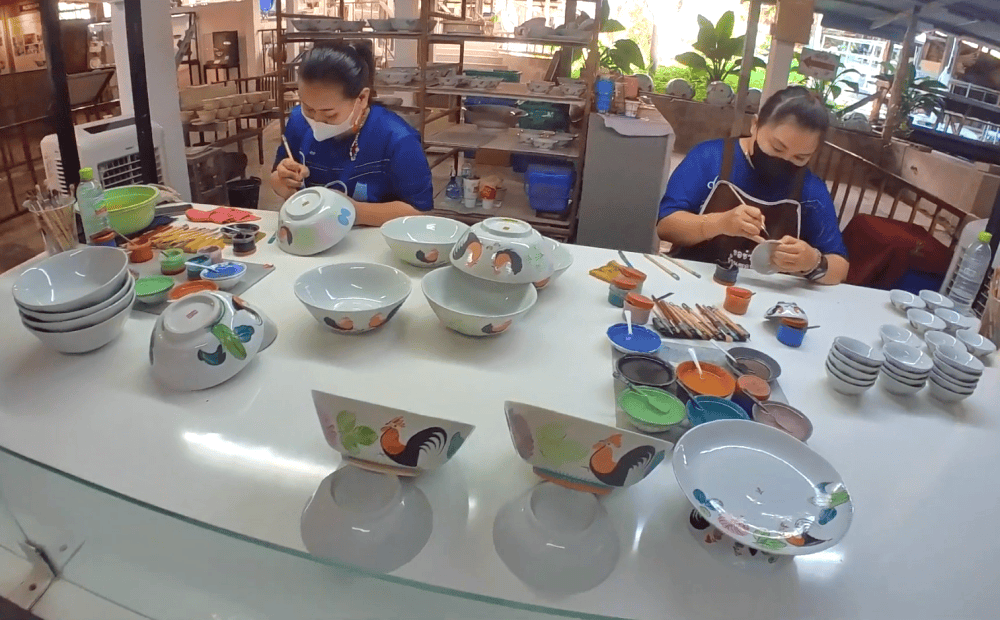
[Image above] Artists at the Dhanabadee Ceramic Museum paint the iconic Thai “rooster” design on white clay bowls. Credit: T-Thai, YouTube
From the ceramic swallows of Portugal to the pie birds of Great Britain, many cultures around the world have embraced feathered friends as iconic symbols in their mythology and artwork. But what happens when that cultural heritage becomes commoditized? Ceramic manufacturers in Thailand are currently struggling with that question amid a surge of low-cost Chinese versions of their traditional “rooster” bowl.
The rooster bowl is a major product of Lampang province in northern Thailand. This piece of white clay kitchenware is immediately distinguishable from other bowls by the distinctive hand-painted artwork on its side, which consists of a chicken flanked by a peony flower and banana tree.
The Dhanabadee Ceramic Museum in Lampang, the capital of Lampang province, traces the history of the rooster bowl to 1955. That year, Chinese immigrant E. Simyo Saechin found a deposit of kaolin clay in the Jae Hom district of Lampang province. He and his friends used this clay to open the first ceramic factory in Lampang province.
Though rooster imagery existed prior to this point in Chinese artwork, Saechin and his friends standardized the Thai rooster bowl design with the peony flower and banana tree. The popularity of the design spread rapidly, and by the 2000s, there were several hundred ceramic factories in the province producing rooster bowls.
In 2012, Saechin’s daughter and son established the Dhanabadee Ceramic Museum to compile the history of Lampang ceramics. The video below offers a look inside this museum.
Unfortunately, since the COVID-19 pandemic, local ceramic production in Lampang province has started to decline. This decline is due to Chinese manufacturers shifting their focus toward ASEAN markets to bypass the recent challenges of selling their products in European markets.
In contrast to traditional rooster bowls, which cost about 20–30 baht, a knock-off Chinese rooter bowl only costs 5 baht. Because local ceramic producers cannot compete with this price, the number of ceramic factories in Lampang province dropped from 328 to 89, according to Preecha Srimala, president of the Lampang Ceramic Association, in a Bangkok Post article.
Despite Lampang ceramicists requesting help from the Thai government to combat the effect of Chinese imports, the Bangkok Post article reports that this help is not forthcoming. Commerce Minister Phumtham Wechayachai said that imposing trade barriers or tariffs on Chinese ceramics could lead to retaliatory measures on Thai agricultural products, so the Thai government did not plan to intervene in the matter.
Without new measures to better protect Thailand against Chinese products, “more companies are likely to shut down,” says Payong Srivanich, chairman of the Joint Standing Committee on Commerce, Industry and Banking, in the Bangkok Post article.
